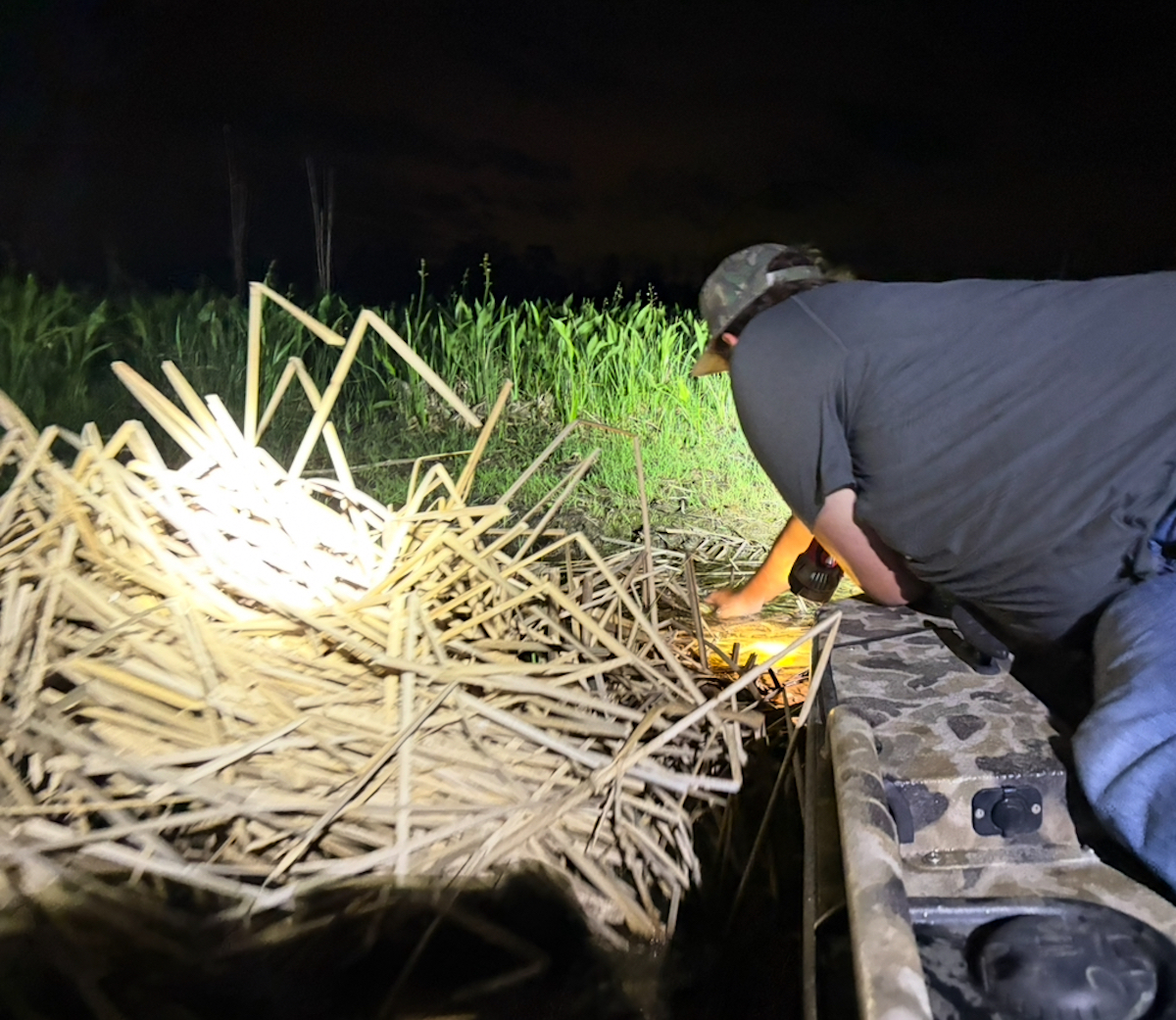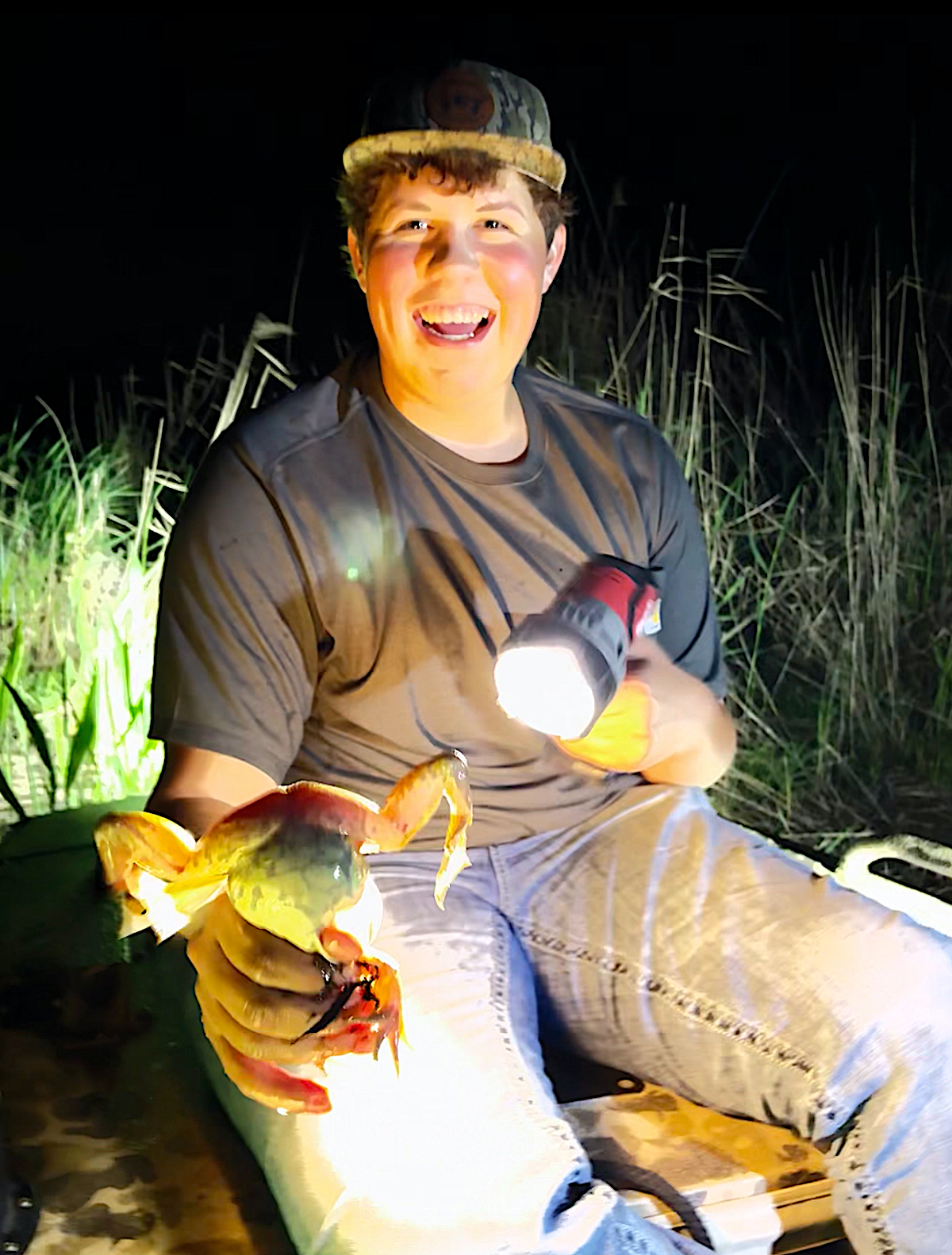
Keith Lusher 04.28.25

As a kid, I can remember the nights when my cousin and I would walk the trail that meandered through the swamp. Our eyes scanned the darkness in search of two small yellow dots shining back at us. I would shine the spotlight, and he would do the gigging. After the frog was on the gig, we’d slam it down into an aluminum trashcan that we took turns dragging behind us.
On an average night, we would catch between 20-30 frogs to fry up. As I got older and learned more about frogging, I realized that there was a simpler way to do it, which required only a bright spotlight and a boat.

That’s how Peyton Clement of Loranger, LA, has been doing it all his life. Clement frogs the Manchac Swamp in Southeast Louisiana and has perfected catching frogs into an art form. “I’ve been doing this since I was a kid,” he said. “My buddies and I would go up and down the bayous picking up frogs wherever we could shine them. We’d get 50 frogs a night and bring them back to the camp to clean and fry up.”
While most froggers use a gig, Clement said there is an easier way. “All we use is a strong spotlight,” he said. Clement positions himself on the bow of the flatboat while the driver shines the light on the bank, looking for a pair of eyes reflecting back. After the eyes give the frog away, the driver turns the boat and aims it right at the frog on the shoreline. “It’s important to keep that light pointed at the frog because it distracts them long enough for the person on the boat’s bow to grab it. The only thing that scares them is if the boat pushes waves up onto the shore,” he said. Cement said the majority of the frogs he catches are on the shore. “While most of the frogs we catch in Manchac are on the shoreline, you start to find more frogs in the hyacinth and lilies the further south you go. We went to Bayou Gauche just south of LaPlace, and they were all in the floating grass.”

Clement said he prefers catching frogs on the shoreline because it’s easier to grab them when there is hard land underneath their bodies. Plus, they are just hard to spot in the water. The 20-year-old said his favorite condition to go frogging is when the tide is low. “Sometimes there will be four feet of shoreline exposed, and that’s when it’s really easy to spot them,” he said.
As the boat nears the shoreline, Clement uses an overhand technique that brings his hand straight down over the frog. After getting them in the boat, he grabs the frog’s two legs and slams them against the side of the boat to knock it out. After that, it’s straight into the ice chest.

At first glance, the cleaning process may look intimidating, but Clement said it’s actually quite simple.
When cleaning the frog, lay it on its belly and cut around its waist with scissors.
Next, cut off the feet, then pull the skin down from the waist toward the legs like you’re pulling its pants down.
Then cut the legs off at the base, rinse with clean water, and you’re done.
For cooking, soak the legs in milk for an hour to remove any fishy taste, then fry in butter or bread and deep-fry like chicken wings for a delicious swamp-to-table meal.
Trending Products












